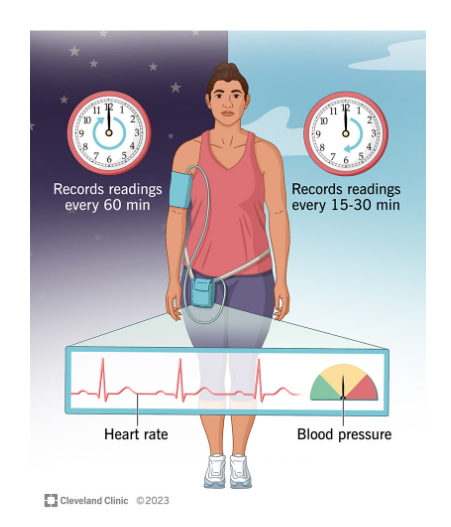By: Thalia Kaylyn Averil
In recent years, hypertension has become a health problem that occurs among young adults (18-24 years) and middle-aged adults (25-44 years). Although the disease is more common in older individuals, there has been an increase in prevalence in younger individuals recently. The American Heart Association states that 1 in 8 people aged 20 to 40 years suffer from hypertension. This prevalence is estimated to increase due to changes in lifestyle. Research shows that young adult populations suffering from hypertension tend to have higher rates of smoking, obesity, dyslipidemia (abnormal levels of fat in the blood), and salt intake compared to the general population.
According to the Ministry of Health of the Republic of Indonesia, hypertension can be divided into two groups based on its causes, which are primary/essential hypertension and secondary hypertension. Primary/essential hypertension is high blood pressure with no known cause, whereas secondary hypertension has a known cause. Hypertension can also be classified based on systolic and diastolic blood pressure (table 1).
Table 1. Hypertension classification.
| Classification | Blood pressure |
| Pre-hypertension | 120-139 (systolic) or 80-89 (diastolic) |
| Grade 1 hypertension | 140-159 (systolic) or 90-99 (diastolic) |
| Grade 2 hypertension | >160 (systolic) or 100 (diastolic) |
Blood pressure can be affected by various factors from previous years. Studies indicate that blood pressure patterns are formed while in the womb. Adolescents whose mothers suffered from hypertension during pregnancy, individuals born prematurely, and individuals born with low birth weight tend to have higher blood pressure. However, genetic factors and environmental factors have a more significant effect on blood pressure.
Hypertension can have dangerous effects, even at a younger age. In the short term, this condition is associated with a high rate of hypertrophy (thickening of the muscle) in the left ventricle of the heart and structural changes in the brain. Generally, high blood pressure remains consistent from adolescence into old age, so individuals with high blood pressure when they are young are likely to continue experiencing high blood pressure later in life. Hypertension in young adults increases the risk of developing cardiovascular problems earlier in old age, such as coronary heart disease, heart failure, stroke and transient ischemic attacks.
Hypertension is known as a silent killer because it does not show significant symptoms, but can cause fatal complications. One way to prevent hypertension at a young age is to maintain nutritional status within normal limits by consuming balanced nutritious food and increasing physical activity. Furthermore, it is important to educate about one of the risk factors for hypertension, which is a family history of hypertension, enabling individuals with a family history of hypertension to pay more attention to their blood pressure. Early detection is also crucial, enabling hypertension at a young age to be treated on time, leading to the prevention of complications. Early detection can be done by checking blood pressure regularly.
One advanced tool that can help detect hypertension is Ambulatory Blood Pressure Monitoring (ABPM). ABPM is a method used to measure blood pressure and heart rate continuously for 24 hours. This device takes multiple readings throughout the day, usually every 15-30 minutes during the day and every 60 minutes at night. This ongoing collection of blood pressure and heart rate data can help healthcare workers determine your blood pressure accurately. In addition, ABPM can also be used to understand the impact of daily activities on blood pressure, evaluate the effectiveness of blood pressure treatment, or compare blood pressure measurements taken at healthcare facilities and at home. Therefore, ABPM is useful for individuals who need adjustments to their blood pressure medication, blood pressure remains high after undergoing treatment, are taking medication that has the potential to increase blood pressure, have low blood pressure, have high blood pressure during pregnancy, and the others. Currently, Abdi Waluyo Hospital already has an Ambulatory Blood Pressure Monitoring (ABPM) device so you can check your blood pressure more accurately and comprehensively.

Figure 1. Ambulatory Blood Pressure Monitoring (ABPM).
Resources
- Hinton TC, Adams ZH, Baker RP, Hope KA, Paton JF, Hart EC, Nightingale AK. Investigation and treatment of high blood pressure in young people. AHA. 2019 Nov 18;75:16-22. doi: 10.1161/HYPERTENSIONAHA.119.13820. Available from: https://www.ahajournals.org/doi/full/10.1161/HYPERTENSIONAHA.119.13820
- Meher M, Pradhan S, Pradhan SR. Risk factors associated with hypertension in young adults: a systematic review. Cureus. 2023 Apr 12;15(4):e37467. doi: 10.7759/cureus.37467. PMID: 37187665; PMCID: PMC10181897. Available from: https://www.ncbi.nlm.nih.gov/pmc/articles/PMC10181897/
- P2PTM Kemenkes RI. Klasifikasi hipertensi [Internet]. Jakarta: Kementerian Kesehatan Republik Indonesia; 2018 May 12 [cited 2024 May 28]. Available from: https://p2ptm.kemkes.go.id/infographic/klasifikasi-hipertensi
- Shaumi NR, Achmad EK. Kajian literatur: faktor risiko hipertensi pada remaja di Indonesia. Media Litbangkes. 2019 Jun;29(2):115-22. Available from: https://repository.badankebijakan.kemkes.go.id/id/eprint/5100/1/Kajian%20Literatur%20Faktor%20Risiko%20Hipertensi%20pada%20Remaja%20di%20Indonesia.pdf
- Cleveland Clinic. 24-hour ambulatory blood pressure monitoring [Internet]. Cleveland: Cleveland Clinic; date of publication unknown [reviewed 2023 Mar 6] [cited 2024 May 28]. Available from: https://my.clevelandclinic.org/health/diagnostics/16330-24-hour-ambulatory-blood-pressure-monitoring
